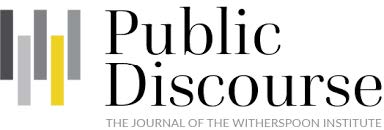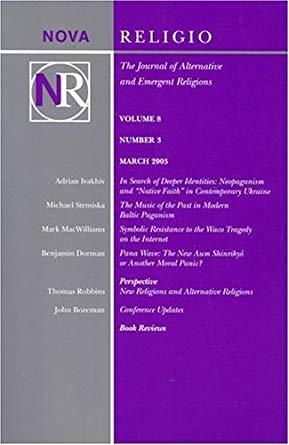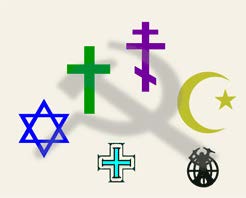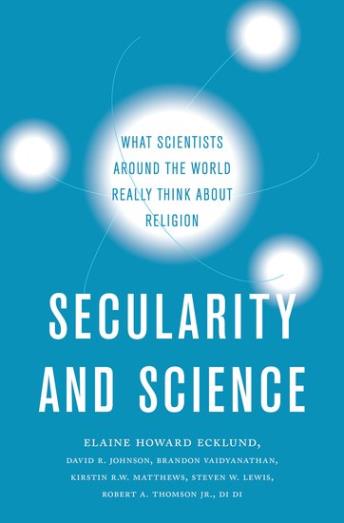
The phenomenon of the non-affiliated or “nones” has been prodded and probed from every available angle, although most often by social scientists and religious professionals concerned about what the rising tide of nones means for the future of institutional religion. Public Discourse, the electronic weekly newsletter of the conservative Witherspoon Institute, devoted its August 18 issue to looking at the broader societal impact of the rise of the nones, including on education, politics, the family and sexuality. As might be expected, the articles on politics and education relate the none trend to conservative concerns: the increasing acceptance of socialism among the millennial generation is seen as due to the growth of utopian and this-worldly political concern in the absence of a transcendent reference. The article on the nones’ impact on sexuality and the family by sociologist Mark Regnerus is based on more empirical research, including a survey of 5,285 Americans conducted by the research firm Ipsos in November 2018, just days after the midterm election. He notes that there has been a sharp 35 percent increase in the practice of cohabitation among nones under 30 in less than four years.

“Since it’s unlikely that the unreligious have recently changed their minds about the morality or pragmatics of living together, my bet is in the other direction: cohabiting leads many to no longer identify as religious at all,” writes Regnerus. On other measures of family behavior, the non-religious are not very different from their religious counterparts. But on measures of permissive sexual attitudes, such as support for open marriage (even if a low percentage actually practices it) and transgender rights for minors, the unreligious differ substantially from evangelicals and Catholics, showing a high level of support that has also grown significantly in a short period of time. Yet Regnerus concludes that the growth of “permissive sexual attitudes and practices have not stimulated the religious revival many Christians claim the Sexual Revolution will yet yield. I see no evidence of it. On the contrary: Christians seem to grow more complicit—or at least more quiet about their misgivings—by the year.” For more information on this issue of Public Discourse, visit: https://www.thepublicdiscourse.com/2019/08/53246/
 ◼ A special issue of the new religious movements journal Nova Religio (May) is devoted to the ways new religions use archeology to buttress their claims of both ancient and divine origins. Editor Jeb J. Card notes that religion has rarely mixed with archeological research, with scholars often labeling any such ventures into the esoteric or religious realm as “pseudoarcheology” (though that may be changing, as several of the articles in this issue were originally papers presented at a special session of the Society for American Archeology in 2017). For the new religionists’ part, modern archeology is limited, refusing to go beyond recent memory to recover “mythic origins and events and entities larger than everyday human life,” although popular representations of archeology have often involved esoteric themes since the 1960s. Contributions include Card’s own article on how early archeology, such as Egyptology, looked for “survivals” that might open the pathway to a mythic past; how Theosophy and its practitioners’ hunger for knowledge about the past is fed both from excavation and the reception of knowledge from unseen sources; and the way in which paranormal investigators research accessible historical objects not controlled by experts (such as an abandoned house) using a materialist scientific approach, but then infuse these objects with mystification. For more information on this issue, visit: https://nr.ucpress.edu/content/22/4
◼ A special issue of the new religious movements journal Nova Religio (May) is devoted to the ways new religions use archeology to buttress their claims of both ancient and divine origins. Editor Jeb J. Card notes that religion has rarely mixed with archeological research, with scholars often labeling any such ventures into the esoteric or religious realm as “pseudoarcheology” (though that may be changing, as several of the articles in this issue were originally papers presented at a special session of the Society for American Archeology in 2017). For the new religionists’ part, modern archeology is limited, refusing to go beyond recent memory to recover “mythic origins and events and entities larger than everyday human life,” although popular representations of archeology have often involved esoteric themes since the 1960s. Contributions include Card’s own article on how early archeology, such as Egyptology, looked for “survivals” that might open the pathway to a mythic past; how Theosophy and its practitioners’ hunger for knowledge about the past is fed both from excavation and the reception of knowledge from unseen sources; and the way in which paranormal investigators research accessible historical objects not controlled by experts (such as an abandoned house) using a materialist scientific approach, but then infuse these objects with mystification. For more information on this issue, visit: https://nr.ucpress.edu/content/22/4
◼ Religious trends and the prospects for religious tolerance and interfaith efforts in the Western Balkans receive extended treatment in the current issue of the open access journal Occasional Papers on Religion in Eastern Europe (39:5).  The issue contains religious demographic snapshots of Albania, Bosnia and Herzegovina, Kosovo, Montenegro, North Macedonia and Serbia, and then features more in-depth articles on each country, including surveys of national elites on questions of religious tolerance and the importance of religion. The issue also includes articles on separate topics, such as a case study of an interfaith council in the Western Balkans and the role of religion in conflict prevention in Bosnia and Herzegovina. A cross-country comparative article suggests that national elites in most of these countries agree on religion’s importance (although more so in Bosnia and Herzegovina than in Albania), and even that religious bodies can have a role in fostering religious tolerance. Another general finding is that most respondents view more ethnically pluralistic regions or countries as being more likely to experience religious conflict. Respondents from more ethnically homogenous countries such as Albania and Kosovo reported greater religious harmony. To download this issue, visit: https://digitalcommons.georgefox.edu/ree/
The issue contains religious demographic snapshots of Albania, Bosnia and Herzegovina, Kosovo, Montenegro, North Macedonia and Serbia, and then features more in-depth articles on each country, including surveys of national elites on questions of religious tolerance and the importance of religion. The issue also includes articles on separate topics, such as a case study of an interfaith council in the Western Balkans and the role of religion in conflict prevention in Bosnia and Herzegovina. A cross-country comparative article suggests that national elites in most of these countries agree on religion’s importance (although more so in Bosnia and Herzegovina than in Albania), and even that religious bodies can have a role in fostering religious tolerance. Another general finding is that most respondents view more ethnically pluralistic regions or countries as being more likely to experience religious conflict. Respondents from more ethnically homogenous countries such as Albania and Kosovo reported greater religious harmony. To download this issue, visit: https://digitalcommons.georgefox.edu/ree/
◼ Secularity and Science (Oxford University Press, $29.95) represents an impressive effort to chart the varied terrain of science and religion throughout the world by focusing on the views and practices of working scientists. The book, written by a team of sociologists headed by Elaine Howard Ecklund, is an extension of her earlier work on American scientists and how they see the relationship—or what many see as a conflict—between science and religion. Based on ethnographic and quantitative studies of scientists (biologists and physicists) in France, the UK, the U.S., China, India, Italy, Taiwan, and Turkey, the book continues its line of inquiry about the conflictual nature of the religion-science relationship. Ecklund and her colleagues, David R. Johnson, Brandon Vaidyanathan, Kirstin R.W. Matthews, Steven W. Lewis, Robert A. Thomson, Jr., and Di Di, find considerable variation among scientists on this central question mediated by their national religious contexts and scientific cultures.
A substantial majority of the scientists in these eight national contexts do not see an inevitable conflict between science and religion, although most uphold the ideal of the independence of science from religion and other spheres.  But there are also significant differences at the national and micro levels. The assertive secularism of France has led to a divide between religion and work in science (where the former is strictly a private matter, if anything), in contrast to the religious and spirituality-permeated society surrounding Indian scientists. But even here Indian scientists speak of their faith and work as separate (although with a widespread acceptance of Indian astrology); there is just more accommodation of religious differences, shaped by India’s particular form of secularism. The book also discusses other factors likely to influence different contexts, not least, the role of immigrant scientists and the minority religious influence that they bring into the workplace. When evaluating the prospects for dialogue between religion and science in the West, the authors find that Italy has a less conflictual stance than the other countries (with the U.S. and UK scientists holding the most conflictual views). The higher degree of religious pluralism in Eastern countries may also allow for greater coexistence between science and religion.
But there are also significant differences at the national and micro levels. The assertive secularism of France has led to a divide between religion and work in science (where the former is strictly a private matter, if anything), in contrast to the religious and spirituality-permeated society surrounding Indian scientists. But even here Indian scientists speak of their faith and work as separate (although with a widespread acceptance of Indian astrology); there is just more accommodation of religious differences, shaped by India’s particular form of secularism. The book also discusses other factors likely to influence different contexts, not least, the role of immigrant scientists and the minority religious influence that they bring into the workplace. When evaluating the prospects for dialogue between religion and science in the West, the authors find that Italy has a less conflictual stance than the other countries (with the U.S. and UK scientists holding the most conflictual views). The higher degree of religious pluralism in Eastern countries may also allow for greater coexistence between science and religion.